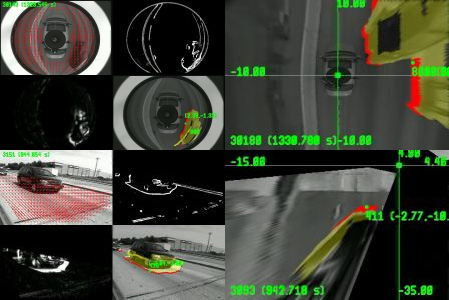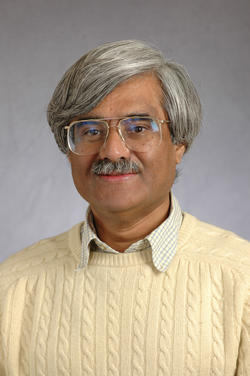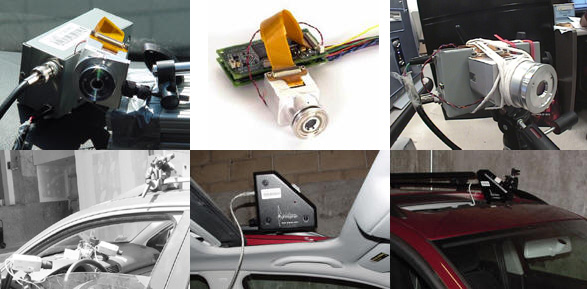News Release
Toyota Adds Â鶹´«Ã½ to Safety Research Partners
 |
| UCSD's Laboratory for Intelligent and Safe Automobiles has a 15-year history of developing computer vision-based systems to enhance auto safety |
San Diego, CA, September 18, 2012 -- The Toyota Collaborative Safety Research Center (CSRC) is expanding its groundbreaking, partner-based automotive safety initiative with the launch of seven new research programs undertaken in partnership with 11 leading research institutions from across North America, including the University of California, San Diego.
Announced at Toyota’s 2012 Safety Research Forum in Washington, D.C. last week, the new projects build on the CSRC’s ongoing efforts to reduce the risk of driver distraction and better protect vulnerable traffic populations, including children, teens, seniors and pedestrians. The seven new initiatives represent a broad expansion of Toyota’s research into the interaction between drivers, vehicles and the traffic environment, as well as a new, more comprehensive effort to understand teen driver behavior.
“We are excited to welcome our new research partners, whose important work will ultimately benefit other automakers and safety professionals,” said Chuck Gulash, Senior Executive Engineer at the Toyota Technical Center and Director of the CSRC. “Through our unique ‘open source’ research model and our commitment to sharing Toyota talent, technology and data with a broad range of institutions and agencies, we hope to drive new innovations and understanding that will benefit not just Toyota drivers but everyone on the road.”
|
Electrical and computer engineering professor Mohan Trivedi from the Â鶹´«Ã½ Jacobs School of Engineering welcomed the announcement that Toyota’s CSRC would fund a project on “Automated Tools for Naturalistic Driving Study Data Analysis for Driving Assessment.”
“For over 15 years we have aggressively pursued research in developing intelligent and safe automobiles,” said Trivedi. “Increasingly, a number of our innovations are finding applications in new car and truck models, especially in Europe and Japan, and we look forward to developing further safety innovations in this partnership with Toyota and its Collaborative Safety Research Center.”
According to the Transportation Research Board of the National Academies, each one percent in safety results in annual savings of 400 lives, 30,000 injuries and $2.3 billion in the U.S. alone. And since collisions lead to congestion, preventing collisions can reduce traffic delays, fuel use and emissions.
Trivedi’s Laboratory for Intelligent and Safe Automobiles (LISA) will focus on developing systematic and automated tools for monitoring and analyzing driver behavior in full context, i.e., what’s happening simultaneously to the driver, the vehicle and its environment. This will include naturalistic, real-world driving studies using LISA’s automotive testbeds (with which researchers have been collecting driving data since 2003).
“Our goal is to better understand dangerous and critical situations,” said Trivedi. “Ultimately, that understanding will help us and others to design effective counter-measures in order to make driving safer for drivers, passengers, pedestrians and indeed anyone who may be at risk in an automotive incident.”
The LISA team will develop tools to detect and track driver behaviors as well as objects and salient features in the environment. The researchers will also analyze how those environmental features distract drivers and lead to risky maneuvers, and how distractive driver behaviors themselves are associated with safe or risky maneuvers.
“We will also develop tools to assess the holistic risk from environmental and driver cues for estimating crash criticality,” adds Trivedi.
|
The UCSD project is one of seven new ones that bring to 24 the number of joint research programs in CSRC’s total portfolio. In addition to Â鶹´«Ã½, new partners with CSRC include Stanford University, University of Toronto, and Ohio State University.
Consistent with the center’s overall research focus, the new projects examine the interaction of vehicle technology with drivers, study the ability of technologies to support driver awareness and behavior, and track the causes of brain injuries in teens. The latter project will track a youth ice-hockey team for a season to better understand the mechanisms of mild traumatic brain injury in adolescents – the most common injury to children in vehicular accidents. The project is a partnership of the National Highway Traffic Safety Administration, the Children’s Hospital of Philadelphia’s Center for Child Injury Prevention Studies (CChIPS), and Sweden’s, the Vehicle Safety Research Center at Chalmers University.
With this announcement, the CSRC is now partnered in ongoing auto-safety research with 16 research institutions and agencies across North America.
The CSRC’s 2012 Safety Research Forum in Washington, D.C. provides policymakers, regulators, scientists and others the opportunity to learn about and gain hands-on experience with the center’s ongoing research projects. The Forum was the CSRC’s second major technology demonstration for the public. Previously, in September 2011, the demonstration took place at the Toyota Technical Center in Ann Arbor, Michigan.
New Research
In addition to the Â鶹´«Ã½ and brain-trauma projects, other universities and research institutions will be responsible for other approaches that make up Toyota’s external safety research program. At Stanford, researchers will develop a “driver-vehicle interface for a fully operable, automated vehicle” to provide effective, real-time support for drivers of a partially intelligent vehicle. University of Toronto researchers will explore how to enhance feedback to help induce safer driving behaviors, and Ohio State will partner with Virginia Tech and the University of Michigan Transportation Research Institute (UMTRI) to develop a detailed test procedure for lane-departure warning and prevention systems.
UMTRI will separately undertake a survey of 5,600 teens and adults “to examine their distracting behaviors while driving, identify social norms for both teens and parents, and develop effective recommendations to help change dangerous behaviors.”
Researchers at the University of Iowa Aging Mind and Brain Institute will work on measuring the use and impact on older drivers of in-vehicle technologies, to guide future development of advanced driver-assistance systems to be helpful to older drivers.
The Collaborative Safety Research Center (CSRC) works with leading North American universities, hospitals, research institutions and agencies on projects aimed at developing and bringing to market new safety technologies to reduce traffic fatalities and injuries on North America’s roads. Based at the Toyota Technical Center (TTC) in Ann Arbor, Michigan, the CSRC follows an open research approach based on sharing Toyota talent, technology, and data with a broad range of institutions and regulators so that safety advances can benefit all of society.
Related Links
Media Contacts
Doug Ramsey, 858-822-5825, dramsey@ucsd.edu
Media Contacts
Doug Ramsey
Jacobs School of Engineering
858-822-5825
dramsey@ucsd.edu

